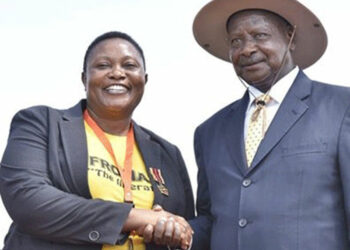Uganda ratified the United Nations Convention on the Rights of the Child(CRC) and the African Charter on the Rights and Welfare of the Child (ACRWC) which mandate Uganda to protect the rights and interests of children without discrimination. Articles 3 and 6 highlight the State parties’ obligation to ensure the protection of Children and provide care necessary for their well-being, survival, growth and physical development of the child, including the physical, mental, moral, spiritual and social dimensions of development. This has further been emphasized by the General Comment 15 (2013) of the UN Committee on the rights of a child in the on the right of the child to the enjoyment of the highest attainable standard of health which has called on states to meet their obligations to respect, protect and fulfil.
Circumcision, as practice, when done well, may not be bad. Many do it for religious, cultural and health reasons. It is also fine when others choose not to, it is their choice. We have long spoken against Female genital mutilation (FGM) which many consider a harmful practice to girls and women as it violates their rights to live a dignified life. The practice was criminalised with the enactment of the Prohibition of the Anti- Female genital mutilation Act, 2010. Much as it may not be true that FGM is no longer practised a hundred per cent, at least it is an offence and religion or culture is not a defence under this law.
As we celebrate efforts against FGM to protect girls and women, who is taking interest in protecting boys against harmful and forceful circumcision? The culture is not bad, however, there are aspects of it that we need to be ready to discuss and sort out however uncomfortable it may be as reading this article is. The Right to practice one’s religion or culture as provided for under Article 37 is not absolute, it must stand the constitutionality test under Article 2 and if that practice is repugnant to the Constitution, the practice is void. Article 34 of the Constitution provides for the rights of the children and mandates everyone to protect them from any social or economic exploitation and harm. The Children Act under section 7 makes it unlawful for anyone to subject children to harmful customary or cultural practice that is harmful to their health, well being, education or social-economic development.
There have been numerous reports about the forceful and harmful circumcision going awry including transmitting HIV/AIDs. In my early years, I witnessed my schoolmates in Primary school undergo a forceful and painful cultural circumcision. They were subjected to trekking several kilometres under the scorching sun, dancing and donning heavy regalia, “malwa” (local brew) being spat on them and men wielding huge sticks were always there to ensure they didn’t escape. This was traumatizing for a child of Primary 4 (who was under 12 years). To make matters worse, they would threaten the boys that should they cowardice, they would be beaten because this would bring shame to their household and as such, they continued to undergo the callous practices in the name of respecting elders.
On the day of circumcision, usually Saturday afternoon, a man with an old un-sterilized knife appeared, cut the foreskin the first time, ran away, and came back for the second cut and then the last. Meanwhile, the boy was being washed with a concoction of water and red pepper using a dry maize cob. Imagine scrubbing the bleeding penis of a 10-year-old boy with a dry maize cob with water mixed with pepper in the name of “being a man.” Meanwhile, several boys took a long time to heal as sometimes the chief “circumciser” did not do a proper job and in the end, the boys could not come back to school in time because they were still nursing their wounds which sometimes went septic! All the above scenarios are unlawful as they expose the child to physical pain, and psychological and physiological torture/harm and even have a toll on their education. How different is the above process from FGM? No one, child should be treated to such harmful, degrading cultural experience. If FGM is harmful to girls and women, how then is this kind of circumcision acceptable to the boy child?
If we must progress as a civilized society, we must transcend beyond tribal, cultural and religious sentiments when dealing with the welfare and well-being of children. The defence of religion and culture is not available under the Law. Uganda has an international, regional and national obligation to take all measures to ensure the boy child is protected from forceful and harmful circumcision through policy and legal framework.
Should we discuss whether boys who have not attained majority age should undergo this ritual in this manner? Is it possible to do it without inflicting both physical and psychological harm? Is it in the best interests of the child? Is it possible to have specialized trained medical personnel to conduct the circumcision? Can we let the boys grow and make decisions to get circumcised when they are of majority age? How do we draw the balance between the right to passage and the harm it causes to the boy child? What options exist to ensure that the boy child is protected?
Do you have a story in your community or an opinion to share with us: Email us at editorial@watchdoguganda.com












